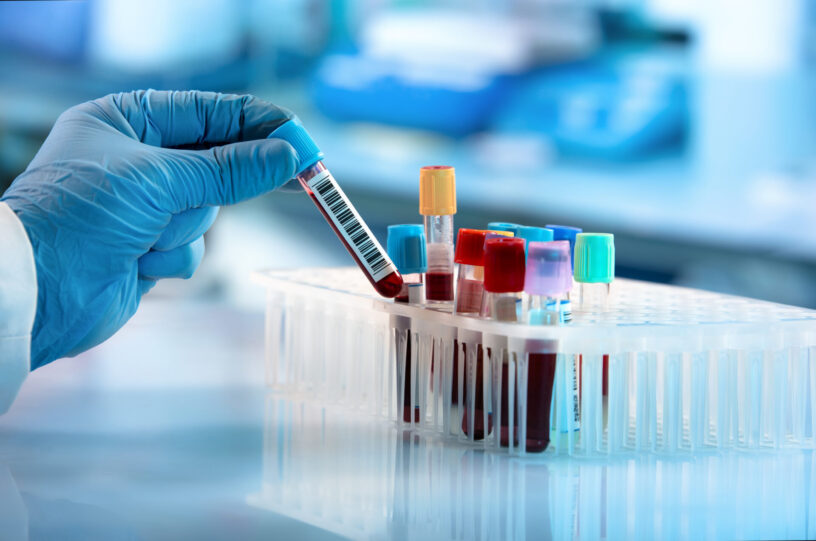Drugs and Diagnostics for Hematological Disorders Market Overview
The drugs and diagnostics for hematological disorders market encompasses the development, production, and sales of pharmaceutical treatments and diagnostic tools for diseases related to blood and its components. Hematological disorders include conditions such as anemia, hemophilia, thalassemia, leukemia, lymphoma, and myeloma, among others. The market is driven by the increasing prevalence of these disorders, advancements in diagnostic technologies, and the development of targeted therapies.
Market Size and Growth
The market for drugs and diagnostics for hematological disorders is witnessing significant growth due to rising awareness, improved healthcare infrastructure, and the increasing adoption of advanced diagnostic tools. The market is also expanding due to the growing number of patients with hematological malignancies and the increasing use of personalized medicine.
Key Components of the Market
- Types of Hematological Disorders:
- Anemia: Including iron-deficiency anemia, sickle cell anemia, and pernicious anemia.
- Hemophilia: A genetic disorder causing impaired blood clotting.
- Thalassemia: A genetic blood disorder involving less hemoglobin and fewer red blood cells.
- Leukemia: A group of cancers that affect the blood and bone marrow.
- Lymphoma: A type of blood cancer that affects the lymphatic system.
- Myeloma: A cancer of plasma cells, a type of white blood cell.
- Drug Types:
- Chemotherapy Agents: Used primarily for treating blood cancers like leukemia, lymphoma, and myeloma.
- Targeted Therapies: Drugs designed to target specific genetic mutations in hematological cancers.
- Immunotherapy: Treatments that boost the body’s immune system to fight blood cancers.
- Iron Chelating Agents: Used in the treatment of thalassemia to reduce iron overload.
- Blood Clotting Factors: Essential for managing hemophilia and other bleeding disorders.
- Erythropoiesis-Stimulating Agents (ESAs): Drugs that stimulate the production of red blood cells, used in anemia treatment.
- Diagnostic Tools:
- Complete Blood Count (CBC): A basic test that provides information about the cells in a patient’s blood.
- Bone Marrow Examination: Used to diagnose blood cancers and other marrow disorders.
- Flow Cytometry: A technology used to analyze the physical and chemical characteristics of cells in a blood sample.
- Genetic Testing: Helps identify specific mutations associated with blood cancers and other genetic blood disorders.
- Molecular Diagnostics: Techniques such as PCR and next-generation sequencing (NGS) for detecting genetic abnormalities.
- End-User Segments:
- Hospitals: The largest segment for both drug administration and diagnostic testing, particularly for complex cases and inpatient care.
- Diagnostic Laboratories: Specialized labs that conduct detailed blood tests, genetic testing, and other diagnostic procedures.
- Research Institutes: Focus on developing new therapies and diagnostic tools for hematological disorders.
- Clinics: Provide outpatient services for ongoing management of chronic hematological conditions.
Market Trends
- Increasing Prevalence of Hematological Disorders: The global rise in hematological diseases, particularly blood cancers, is driving demand for both drugs and diagnostics.
- Advancements in Molecular Diagnostics: Growing adoption of molecular and genetic testing is enabling earlier and more accurate diagnosis of hematological disorders.
- Development of Targeted Therapies: The market is seeing a shift towards personalized medicine, with the development of targeted therapies that are more effective and have fewer side effects.
- Expansion of Immunotherapy: Immunotherapy is becoming a cornerstone in the treatment of hematological malignancies, offering new hope for patients with refractory or relapsed conditions.
- Focus on Pediatric Hematology: There is increasing attention on pediatric hematological disorders, with new treatments and diagnostic tools being developed specifically for children.
Market Drivers
- Rising Incidence of Blood Cancers: The growing number of leukemia, lymphoma, and myeloma cases is a major driver of the market.
- Technological Advancements: Innovations in diagnostic technology, including next-generation sequencing and flow cytometry, are enabling more precise and early diagnosis.
- Government Support and Funding: Increased funding for research in hematological disorders and government initiatives to improve access to treatment are fueling market growth.
- Aging Population: An aging global population is more susceptible to hematological disorders, leading to increased demand for both diagnostics and therapeutics.
- Increased Awareness: Growing awareness among healthcare providers and patients about hematological disorders is driving higher diagnosis rates and demand for treatment.
Challenges
- High Cost of Treatment: The high cost of drugs, particularly targeted therapies and immunotherapies, can be a barrier to market growth, especially in low- and middle-income countries.
- Side Effects and Toxicity: Many hematological drugs, particularly chemotherapy agents, have significant side effects that can limit their use.
- Drug Resistance: The development of resistance to existing therapies, particularly in blood cancers, poses a challenge for treatment.
- Regulatory Hurdles: Strict regulatory requirements for the approval of new drugs and diagnostics can delay market entry.
- Access to Diagnostics: Limited access to advanced diagnostic tools in certain regions can hinder early diagnosis and treatment.
Market Segmentations:
Global Drugs and Diagnostics for Hematological Disorders Market: By Company
Abbot
Pfizer
Amgen
Beckman Coulter
Mindray
Roche
Biorad
Eli Lilly
Sysmex
Bristol-Myers
Siemens
Horbia
Nihon Kohden
Global Drugs and Diagnostics for Hematological Disorders Market: By Type
Analyzers
Reagents
Global Drugs and Diagnostics for Hematological Disorders Market: By Application
Hospital
Clinic
Others
Global Drugs and Diagnostics for Hematological Disorders Market: Regional Analysis
The regional analysis of the global Drugs and Diagnostics for Hematological Disorders market provides insights into the market’s performance across different regions of the world. The analysis is based on recent and future trends and includes market forecast for the prediction period. The countries covered in the regional analysis of the Drugs and Diagnostics for Hematological Disorders market report are as follows:
North America: The North America region includes the U.S., Canada, and Mexico. The U.S. is the largest market for Cold-chain Pharma in this region, followed by Canada and Mexico. The market growth in this region is primarily driven by the presence of key market players and the increasing demand for the product.
Europe: The Europe region includes Germany, France, U.K., Russia, Italy, Spain, Turkey, Netherlands, Switzerland, Belgium, and Rest of Europe. Germany is the largest market for Cold-chain Pharma in this region, followed by the U.K. and France. The market growth in this region is driven by the increasing demand for the product in the automotive and aerospace sectors.
Asia-Pacific: The Asia-Pacific region includes Singapore, Malaysia, Australia, Thailand, Indonesia, Philippines, China, Japan, India, South Korea, and Rest of Asia-Pacific. China is the largest market for Cold-chain Pharma in this region, followed by Japan and India. The market growth in this region is driven by the increasing adoption of the product in various end-use industries, such as automotive, aerospace, and construction.
Middle East and Africa: The Middle East and Africa region includes Saudi Arabia, U.A.E, South Africa, Egypt, Israel, and Rest of Middle East and Africa. The market growth in this region is driven by the increasing demand for the product in the aerospace and defense sectors.
South America: The South America region includes Argentina, Brazil, and Rest of South America. Brazil is the largest market for Cold-chain Pharma in this region, followed by Argentina. The market growth in this region is primarily driven by the increasing demand for the product in the automotive sector.
Click Here, To Buy Premium Report https://stringentdatalytics.com/purchase/drugs-and-diagnostics-for-hematological-disorders-market/15393/?license=single
Frequently Asked Questions About This Report
- How big is the Market?
- What is the Market growth?
- Which segment accounted for the largest Market share?
- Who are the key companies/players in the Market?
- What are the factors driving the Market?
- How has the Covid-19 pandemic affected the Market?
- What is the leading solution segment in the Market?
- What is the leading deployment segment in the Market?
- Which enterprise segment accounted for the largest revenue share in the Market?
About Stringent Datalytics
Stringent Datalytics offers both custom and syndicated market research reports. Custom market research reports are tailored to a specific client’s needs and requirements. These reports provide unique insights into a particular industry or market segment and can help businesses make informed decisions about their strategies and operations.
Syndicated market research reports, on the other hand, are pre-existing reports that are available for purchase by multiple clients. These reports are often produced on a regular basis, such as annually or quarterly, and cover a broad range of industries and market segments. Syndicated reports provide clients with insights into industry trends, market sizes, and competitive landscapes. By offering both custom and syndicated reports, Stringent Datalytics can provide clients with a range of market research solutions that can be customized to their specific needs.
Contact Us
Stringent Datalytics
Contact No- +1 346 666 6655
Email Id- sales@stringentdatalytics.com




Leave a Reply